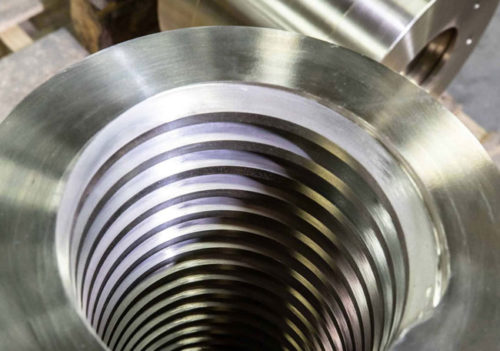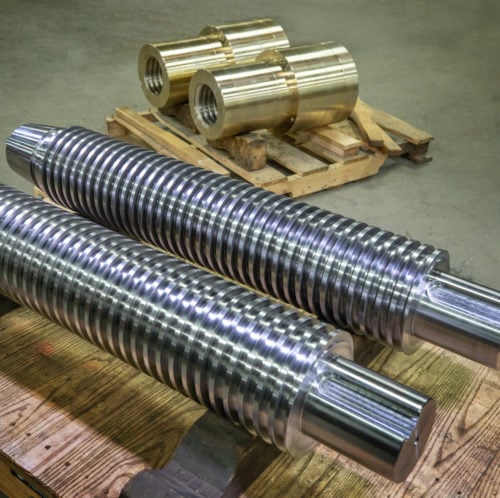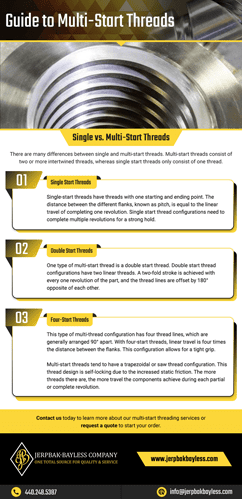
Single vs. Multi-Start Threads
There are many differences between single and multi-start threads. Multi-start threads consist of two or more intertwined threads, whereas single start threads only consist of one thread.
Single Start Threads
Single-start threads have threads with one starting and ending point. The distance between the different flanks, known as pitch, is equal to the linear travel of completing one revolution. Single start thread configurations need to complete multiple revolutions for a strong hold.
Double Start Threads
One type of multi-start thread is a double start thread. Double start thread configurations have two linear threads. A two-fold stroke is achieved with every one revolution of the part, and the thread lines are offset by 180° opposite of each other.
Four-Start Threads
This type of multi-thread configuration has four thread lines, which are generally arranged 90° apart. With four-start threads, linear travel is four times the distance between the flanks. This configuration allows for a tight grip.
Multi-start threads tend to have a trapezoidal or saw thread configuration. This thread design is self-locking due to the increased static friction. The more threads there are, the more travel the components achieve during each partial or complete revolution.
Applications of Multi-Start Threads

Multi-start threads are used for transmitting power and generating movement. Because each partial or complete revolution equals more linear travel based on the number of threads, multi-threaded components can efficiently handle more power. Multi-start threads can also be used for some fastening purposes. Products that need to create a water- or air-tight seal perform better with multi-start threads. The following industrial products often utilize multi-start threads:
- Gate valves
- Satellite roller screws
- Planetary roller screws
- Threaded rods
- Vertical turret lathes
- Fly presses
- Buttress threads
- Higbee threads
- Multi-Start Thread Machining Process
All threading processes require precise machining. Expert machinists handle the process by first determining the exact measurements for the lead, lead angle, and pitch of the multi-start thread. Next, the machinist will use a single form thread mill to helically interlope the first thread at the proper lead. After the first thread has been cut, the machinist will navigate the thread mill to the starting point of the next thread, and proceed until all remaining threads have been cut.
Multi-Start Threading From Jerpbak-Bayless
At Jerpbak-Bayless, we specialize in custom thread grinding services for multi-start thread configurations. Our machinists can create internal and external threads in any form or configuration to suit static friction requirements for various applications. Along with precision threading, we provide in-house testing and inspection services to ensure products meet strict tolerances and our high production standards. Contact us today to learn more about our multi-start threading services or request a quote to start your order.


